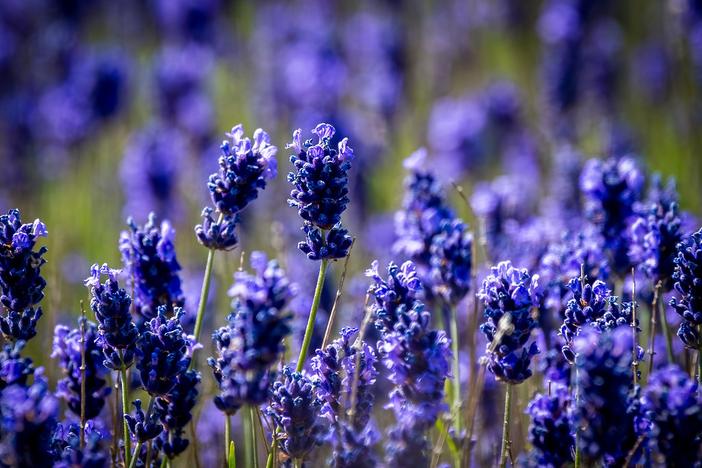English Lavender
(Lavandula angustifolia)
English Lavender (Lavandula angustifolia)
/
/

Sandor Somkuti
CC BY-SA 2.0











































Estimated Native Range
Summary
English Lavender is celebrated for its fragrant flowers, which are used in perfumery, aromatherapy, and culinary applications. The plant’s oil is also known for its antiseptic and anti-inflammatory properties. In the garden, it serves as a low-maintenance ornamental, ideal for borders, herb gardens, and as a low hedge. It is drought-resistant, making it suitable for xeriscaping. English Lavender requires well-drained soil, preferably sandy or gravelly, and thrives in full sun. It is susceptible to root rot if overwatered or planted in heavy, moist soils. Pruning after flowering helps maintain its compact shape and encourages new growth.CC BY-SA 4.0
Plant Description
- Plant Type: Shrub
- Height: 1-2.5 feet
- Width: 1.7-2 feet
- Growth Rate: Moderate
- Flower Color: Blue, Purple
- Flowering Season: Spring, Summer
- Leaf Retention: Evergreen
Growth Requirements
- Sun: Full Sun
- Water: Medium, High
- Drainage: Fast
Common Uses
Bank Stabilization, Bee Garden, Bird Garden, Border Plant, Butterfly Garden, Deer Resistant, Drought Tolerant, Edible*Disclaimer: Easyscape's listed plant edibility is for informational use. Always verify the safety and proper identification of any plant before consumption., Fragrant, Groundcover, Hummingbird Garden, Low Maintenance, Potted Plant, Rabbit Resistant, Rock Garden, Salt Tolerant, Showy Flowers, Street Planting
Natural Habitat
rocky and sunny habitats including coastal scrub and open woodlands
Other Names
Common Names:
Scientific Names: Lavandula angustifolia , Lavandula angustfolia , Lavandula fragrans , Lavandula delphinensis , Lavandula vera var. ligustica
GBIF Accepted Name: Lavandula angustifolia Mill.